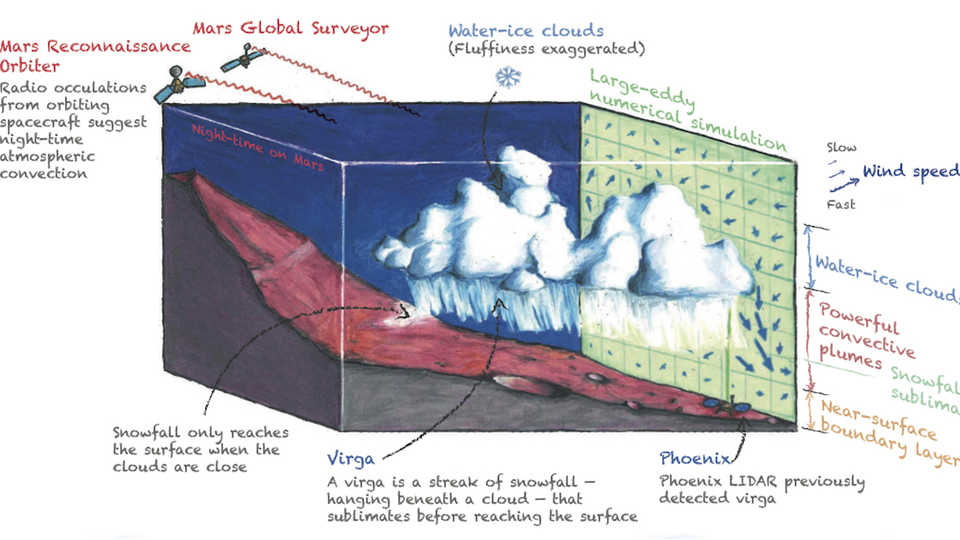Each month, renowned astronomers share their latest research at Morrison Planetarium.
Universe Update
Snowstorms on Mars

When night falls on Mars, it gets really cold. Temperatures can plummet to –73 ℃ (or –100 ℉). And scientists, publishing this week in Nature Geoscience, say that those temperatures might be just right for snowstorms.
Snowstorms? On Mars? I mean we know about dust storms occurring on the Red Planet (even though they were slightly exaggerated in The Martian). But snowstorms?
Water-ice clouds in the thin martian atmosphere form despite the limited amount of atmospheric water vapor compared to Earth. These clouds were one of the first things we observed on our neighboring planet, and they change with the seasons. Their dry nature made scientists think that any snow falling from the clouds did so as slowly settling particles, rather than in rapidly descending storms. Until now.
The authors of the current study used data from multiple Mars missions and built an atmospheric model to simulate the weather on Mars. They discovered that as the martian night gets colder, cooling water-ice cloud particles can create unstable conditions within the cloud, triggering the development of a descending plume of snow. These turbulent storms, which can only form at night, act to mix the atmosphere vigorously and, in some places, to deposit snow on the surface of the Red Planet.
The scientists say that these snowstorms are similar to small localized storms on Earth called microbursts, where cold dense air carrying snow or rain is rapidly transported downward from a cloud. They also could explain the snowfall mystery on Mars detected by NASA’s Phoenix lander in 2008.
The authors say that these snowstorms could clear up how water was—and is—transported on Mars, both in the present and in the distant past.
Sketch by James Tuttle Keane @jtuttlekeane